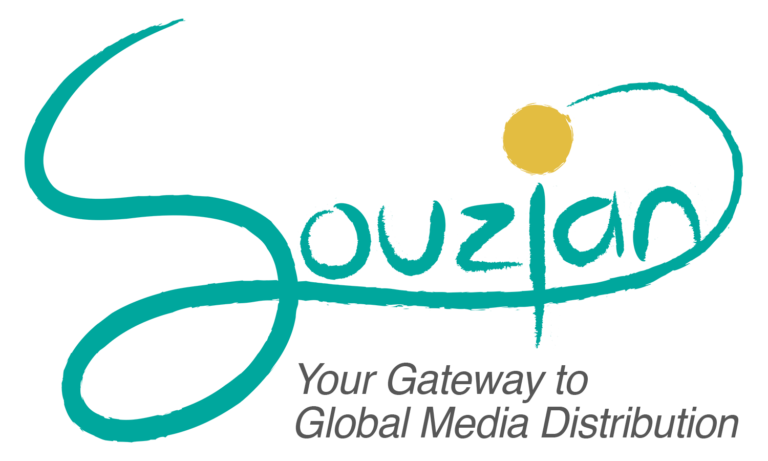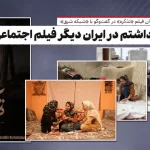Souzian’s Report: 18th Tehran Cinema Vérité Documentary Film Festival
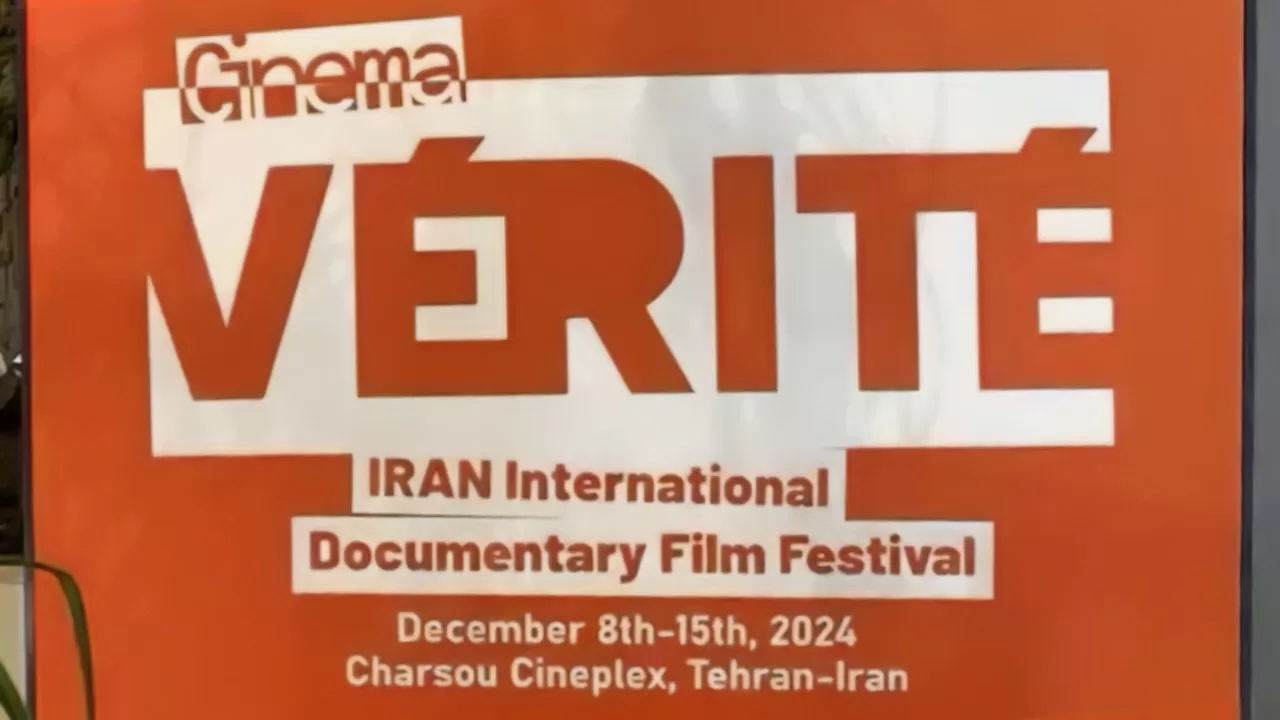
The 18th edition of the Cinema Vérité Festival in Tehran opened its doors with energy, creativity, and a diverse collection of documentaries from both Iranian and international filmmakers.
I attended the festival with Ms. Mahkame Majdi, the head of film submissions at Souzian. Our main goal was to connect with producers and directors to discuss potential collaborations for the global distribution of documentaries. It was a valuable opportunity to expand our professional network and build new bridges for future partnerships.
Day One
First Film Screening: The Godmother (Belgium)
Among the various films being screened, I was drawn to a film called The Godmother. The name itself caught my attention. But as I walked through the festival corridor, I noticed something unusual — unlike most other films, this one had no poster on display. Later, I learned that some non-Iranian films, including The Godmother, were not included on the wall posters.
The Godmother was a documentary from Belgium, directed by Marzena Sowa [instagram], a French-Polish filmmaker and cartoonist. The film focused on the challenges faced by women throughout different eras. It portrayed the journey of women chasing their dreams, highlighting generational differences and societal expectations.
What impressed me most was the honesty of its narrative. The film didn’t try to impose any specific message or belief. Instead, it presented the lived experiences of several women across different time periods, allowing the audience to draw their own conclusions.
One of the film’s standout features was its powerful monologues, narrated by Marzena Sowa herself. Combined with thoughtful and meaningful editing, these monologues made the experience even more engaging. They encouraged reflection and invited the audience to relate the film’s message to their own lives. For me, as a man, it was an opportunity to think deeply about the experiences of the women around me. The film made me re-examine their struggles, dreams, and realities.
I sincerely hope The Godmother receives the attention it deserves from other festivals and streaming platforms. I also wish Marzena Sowa success in her filmmaking journey because her work in this film was truly impactful.
Break and Conversation with Hashor Streaming Platform
After watching The Godmother, I decided not to watch another film right away. It wasn’t that I wasn’t interested — I simply felt the need to pause and reflect. The depth of the story, combined with its emotional impact, made me feel like I needed some time to process it.
After a short break, I made my way to the exhibition booths, where I visited the stand of Hashor, a film distribution platform. There, I had a conversation with Mr. Tohidi about the possibilities of film distribution on this platform. Our discussion revolved around collaboration methods and how independent documentaries could be made available to a larger audience. Our conversation gave me hope for future cooperation. I sensed a real opportunity to build a stronger partnership with Hashor, and I’m optimistic about what lies ahead.
End of Day One
Day one of the Cinema Vérité Festival was filled with inspiration and constructive discussions. From the impactful experience of watching The Godmother to the productive conversation with the team at Hashor, every moment felt significant.
The festival offers a unique space for raw, honest storytelling, and the first day fully lived up to this promise. Witnessing the experiences of women from different generations in The Godmother gave me a fresh perspective on life. On the other hand, my meeting with industry representatives opened up new doors for the international distribution of Iranian documentaries.
Day Two
The second day of the 18th Cinema Vérité Festival was much more eventful and insightful for me. Following the positive response to the report I posted on Instagram about Day One, I decided to approach Day Two with a more interactive plan. My goal was to attend a workshop, engage in conversations with directors, and, of course, watch another documentary. But by the end of the day, something unexpected happened — I ended up on camera for Channel 4!
Workshop: Social Documentary Filmmaking by Zhaoliang (China)
One of the highlights of the day was attending a workshop led by Zhaoliang [website], a well-known Chinese filmmaker and documentarian. His session focused on the challenges of creating social documentaries, especially under difficult conditions such as censorship and production restrictions. His message was clear: “There is always a way to tell your story, even if your film never gets released in your own country.”
Zhaoliang’s films revolve around social issues, anthropology, and the impact of environmental change on human life. During the workshop, he explained how each of his films is inspired by a specific story, event, or human experience. One thing that stood out to me was his approach to photo storytelling. He shared that every photo or still frame used in the presentation of his films carries its own unique narrative. None of the frames were randomly selected. This idea resonated with me because I realized that every frame has the potential to tell a story on its own. It made me think about how a single image can serve as an entry point for an entire film.
But the workshop wasn’t without its flaws. There were a few technical issues that caused delays. The festival team struggled to connect a Mac computer to the projector, which kept the audience waiting. Another challenge was the translation from Chinese to Persian. The translator seemed to have difficulty keeping up with Zhaoliang’s thoughts, which affected the clarity of the message. I had expected the workshop to be conducted in English, so the unexpected translation issues were a bit frustrating.
Despite these setbacks, I found the workshop valuable. Zhaoliang’s experiences and insights into navigating the obstacles of documentary filmmaking were inspiring. It reminded me that limitations can become creative opportunities if approached with patience and persistence.
Meeting with Hadi Afarideh (Iranian Filmmaker)
During one of the festival’s breaks, I had the chance to have a conversation with Hadi Afarideh, a well-known Iranian filmmaker. Hadi is known for his focus on social documentaries in Iran, and I’ve always admired his unique approach to storytelling. His ability to capture the essence of Iranian society and present it with such clarity is truly inspiring.
In our discussion, I asked him to share his films with me for global distribution. My goal was to explore how we could collaborate to stream his works on international platforms. Given the power of digital streaming, I believe his documentaries deserve a larger audience beyond Iranian borders. Hadi seemed open to the idea, and I’m optimistic that we can make something meaningful happen.
This meeting reaffirmed for me the importance of direct, face-to-face conversations at film festivals. While emails and online meetings are useful, nothing compares to the impact of an in-person conversation. Moments like these are why I prioritize attending festivals in person — they create opportunities for collaboration that might never happen otherwise.
Film Screening: System Error (Russia)
Later in the day, I attended the screening of System Error, a documentary from Russia directed by Claudia Bershadskaya. The story follows the dramatic journey of Dr. Mikhail Mikhailovich Kaabak, Russia’s only pediatric transplant surgeon for children. The heart of the story revolves around Dr. Kaabak’s dismissal from the National Medical Research Center for Children’s Health, which leaves his young patients — both those he’s already treated and those on the transplant waiting list — at risk.
The parents of the affected children launch a public fight to reinstate Dr. Kaabak. The story eventually leads to a courtroom battle in Moscow, where the doctor must defend his right to continue saving children’s lives, all while confronting a deeply bureaucratic and outdated system.
Film Structure & Experience
The opening of the film was absolutely brilliant. The editing was fast-paced and dynamic, immediately drawing the viewer in. The initial scenes featured quick cuts, impactful dialogue, and a variety of well-shot B-roll footage. It was clear that the production team had access to a wealth of raw footage, and they used it masterfully. The opening sequence set the stage for an emotional and intense viewing experience.
For me, the film can be broken down into four distinct parts. The first two parts were exceptional — gripping, well-structured, and emotionally engaging. But as the story progressed, things started to unravel. The third part became confusing, with shifts in tone and direction that were hard to follow. It felt as if essential moments were either missing or left unexplained. The fourth part, which should have been the film’s resolution, seemed to be blended into the third section, making it difficult to recognize where the climax ended and the conclusion began.
By the time the credits rolled, I was left unsure of the film’s intended message or emotional takeaway. I believe the script for these final sections could benefit from a thoughtful revision to bring clarity and purpose to the story’s conclusion.
Overall Impression
Despite its narrative flaws, System Error is a powerful critique of Russia’s medical system. It avoids blaming individuals and instead targets the system itself. I found this approach compelling because it’s easy to focus on personal accountability, but systemic change is far more difficult to address. It reminded me of how social documentaries can expose larger social issues by focusing on one specific human story.
The film had its flaws, but the courage it takes to tell such a story is undeniable. I appreciate the effort to challenge an entrenched system, and I hope the documentary is seen widely — not just in Russia, but internationally, where it could spark more conversations about health, justice, and human rights.
Interview with Channel 4: Global Distribution of Documentary Films
After returning to the International Pavilion of the Cinema Vérité Festival, I was invited to participate in an interview with Channel 4. The topic of the discussion was centered around the global distribution of documentary films — a subject that lies at the heart of my work.
The interview was broadcast at 11:30 pm local time, and during the session, I shared insights on key topics such as different methods of film distribution, pitch decks for documentary projects, and film promotion strategies. While I was undoubtedly feeling a bit nervous beforehand, I made sure to have a brief discussion with the production team to get clarity on the structure of the conversation and the key talking points.
Despite the initial nerves, the experience turned out to be both exciting and eye-opening. It gave me a chance to reflect on the potential of these types of public discussions. Sharing knowledge in this way felt impactful, and it made me think more seriously about the value of participating in similar conversations in the future. Opportunities like this can create bridges, not only for films but for the broader ideas around documentary distribution and storytelling on a global scale.
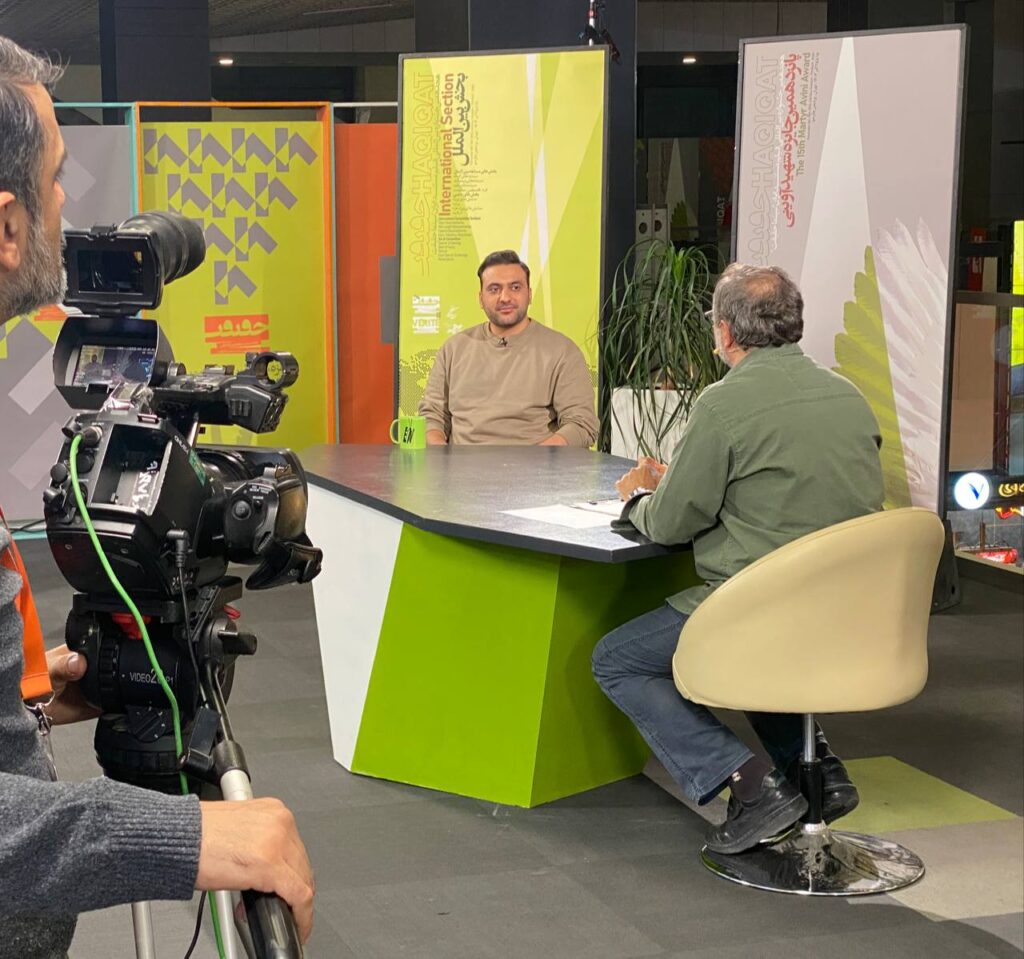
End of Day Two
Day Two of the 18th Cinema Vérité Festival was a whirlwind of experiences, learning, and unexpected moments. From the insightful workshop with Zhaoliang, where I gained a deeper appreciation for the power of intentional storytelling, to my conversation with Hadi Afarideh, which opened new possibilities for collaboration in the global distribution of Iranian documentaries. Watching the documentary System Error offered a critical look at systemic flaws within Russia’s healthcare system, and while the film’s structure had its flaws, its message was undeniably powerful.
But perhaps the most surprising moment of the day was being invited to speak on Channel 4 about global film distribution. Sharing thoughts on pitching, promotion, and documentary streaming in front of an audience gave me a fresh perspective on public discussions of the industry. It was a long day filled with reflection, connection, and new possibilities for future collaborations — and as I left the festival grounds, I couldn’t help but feel that the best was yet to come.
Day three
After two intense days of activity, I decided to take a step back on Day Three to recover from the fatigue. While I couldn’t attend the festival in person, it was a chance to reflect on the films I’d watched, analyze their storytelling, and consider their potential for global distribution.
I also spent time reviewing the schedule for the coming days, selecting key films I didn’t want to miss. Meanwhile, I followed up on ongoing negotiations and conversations with directors and industry representatives to ensure the connections I’d made would lead to meaningful outcomes.
Although quieter than the previous days, Day Three was essential for reflection and planning, laying the groundwork for a stronger presence in the days ahead.
Day Four
Day Four was incredibly productive. The groundwork I had laid over the previous two days finally paid off. Several filmmakers and distributors actively sought me out for discussions. Even more inspiring were the industry professionals who generously shared their experiences and insights on film distribution, offering practical advice with no expectation in return. Moments like these remind me of the value of attending festivals in person.
Film Screening: Ammo Baba (Iraq)
If you’re a football fan, you might remember Iraq’s incredible success on the field during the 1980s. The documentary Ammo Baba, directed by Mohammed Khalil[instagram], tells the story of Iraq’s legendary football coach, Ammo Baba, a figure deeply beloved by Iraqis. The film weaves together a rich tapestry of archival footage from Iraq’s football history, combined with interviews from former players, students, and his sister.
The narrative follows his rise as a coach, leading Iraq to historic victories, and then delves into the challenges he faced under the rule of Uday Hussein, son of Saddam Hussein and head of Iraq’s Olympic Committee. The story becomes a poignant mix of triumph and tragedy, a reflection of how Middle Eastern leaders often mistreat their national heroes.
After the screening, I had the chance to speak with Mohammed Khalil himself. He shared insights into the difficulties of filmmaking in Iraq, where fear and hesitation around discussing the Ba’athist era remain strong, even 20 years after its fall. One of the most striking points he raised was the two-year effort to gather archival footage. After the U.S. invasion of Iraq, large portions of Iraq’s TV archives were destroyed, while other parts were seized by private collectors. Mohammed spoke about the huge personal costs he endured to locate and purchase key footage from collectors, a process that required patience, persistence, and a significant financial investment.
Meeting with Iranian Filmmakers
A key highlight of Day Four was my meeting with Fathollah Amiri, one of Iran’s most prominent environmental filmmakers. As someone who is already responsible for the distribution of several of his films, it was an opportunity to strengthen our collaboration. But it didn’t end there. Fathollah Amiri introduced me to several other Iranian directors and producers at the festival, opening doors for even more opportunities.
Our conversations revolved around the challenges of distribution and the evolving nature of media outreach. We also discussed the overall atmosphere of this year’s festival, and there was a shared sentiment that the quality of the festival had noticeably improved compared to previous years. This was reflected in the quality of the films, the technical organization, and the growing diversity of international participants.
End of Day Four
Day Four was filled with meaningful encounters, valuable introductions, and emotional cinematic moments. From the emotional power of Ammo Baba to the inspiring conversations with Iranian filmmakers, the day felt like a perfect balance of storytelling and professional growth. Fathollah Amiri’s introductions opened new pathways for future collaborations, and I left the festival with an even stronger sense of community.
Souzian’s Report: 18th Tehran Cinema Vérité Documentary Film Festival
Day Five
Day Five was all about connections and collaboration. Thanks to Ms. Shirin Naderi, the International Affairs Manager of the Cinema Vérité Festival, a special session was organized to bring together all the international guests and industry professionals in one place. The goal was to create a space for informal conversations, knowledge exchange, and project discussions.
The session lasted for about three hours, and it turned out to be one of the most valuable experiences of the festival so far. I had the chance to engage with filmmakers and producers from Norway, Belgium, Turkey, and Iraq, each of them sharing unique perspectives on documentary production and distribution in their respective countries. These encounters weren’t just casual conversations — they sparked ideas for future collaborations and potential joint projects.
What made this gathering even more impactful was the presence of filmmakers and producers who actively approached me with questions about global distribution. We discussed the role of pitch decks, the importance of tailored marketing strategies, and how independent films could find a home on international streaming platforms. Beyond the international guests, I also had the privilege of meeting several other Iranian filmmakers. Each of these encounters felt like the beginning of a longer conversation that will likely continue well beyond the festival.
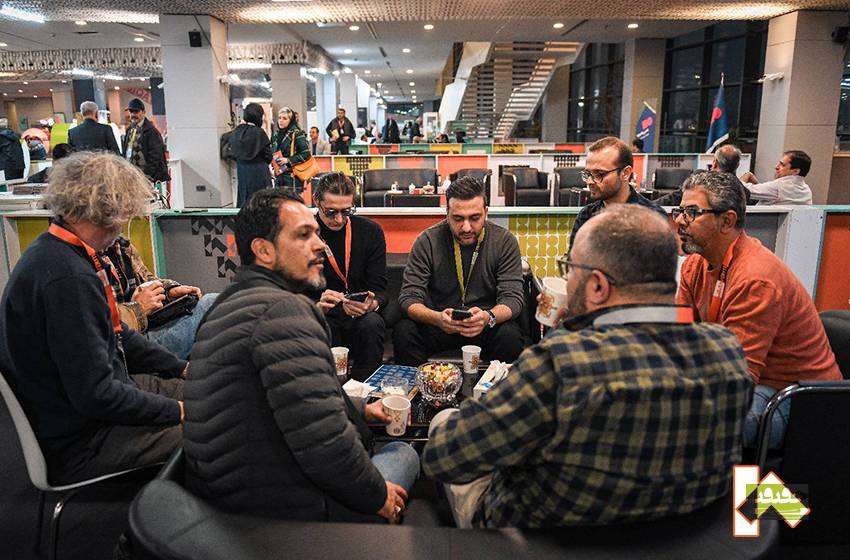
Film Screening: DefenseLess Mountains (Iran)
On Day Five, I also watched my first Iranian film of the festival, DefenseLess Mountains, directed by Mostafa Gandomkar [instagram]. My interest in this film was sparked by its environmental theme and my familiarity with the director’s previous work.
The story follows an elderly man who claims to have seen a bear in the mountains near his village. If his claim is confirmed, the region will be declared a protected hunting-free zone, with the local environmental organization placing stricter controls on the area. The premise was intriguing from the start, and it highlighted the role of local communities in wildlife protection.
The narrative builds around the uncertainty of the old man’s claim. Will he manage to capture a photo or video of the bear to prove its existence? This mystery keeps the viewer engaged, but as the story progresses, a shift occurs. In an unexpected twist, the presence of the bear is ultimately confirmed not by the old man, but by a tourist who happens to capture footage of the bear and shares it online. This twist creates a sense of narrative dissonance. The entire premise of the old man’s quest becomes somewhat irrelevant, as the confirmation of the bear’s existence happens by chance. The story takes a sharp turn, and before you know it, the region is declared a hunting-free zone. The sudden appearance of the director on camera to present this resolution felt rushed and, for me, somewhat unsatisfying.
Pacing was another issue. While the premise was engaging, the film felt unnecessarily long and drawn out. I believe the entire story could have been told effectively in 30 to 40 minutes. Certain scenes lingered longer than necessary, making the overall experience feel slower than it should have been.
On a more personal note, since the film was in Luri, my native language, I didn’t need to rely on subtitles. But I did notice that the Persian subtitles had timing issues, incorrect translations, and even spelling mistakes. For a film being screened at a festival of this caliber, I expected a much higher level of quality control in this area. While it didn’t affect my understanding, it could certainly leave a negative impression on those relying on the subtitles to follow the story.
Despite these points of critique, I admire the effort put into the film. The story’s core message about community-driven conservation is essential, and I hope it gets the recognition it deserves. I sincerely wish Mostafa Gandomkar success with his future projects. With some careful re-editing, I believe DefenseLess Mountains could become a much stronger and more cohesive film.
Film Screening: Brussels Close Up (Belgium) – Winner
The next film I watched was a short documentary from Belgium titled Brussels Close Up, directed by Ilja Sircenko [instagram], who is both a filmmaker and photographer. The concept of the film was as simple as it was thought-provoking. It follows a photo exhibition project centered on the theme of privacy in public spaces.
The process was fascinating. Ilja Sircenko takes close-up portraits of pedestrians on the streets of Belgium using a flash, capturing them at extremely close range. After taking the shot, he then approaches the subject to request their permission to display the photo in his exhibition. If they agree, the photo is included; if they don’t, it’s discarded.
This interactive process of negotiation and consent formed the core of the documentary’s narrative. But the film went beyond the act of photography itself. It posed larger questions about the definition of privacy in modern society. It explored the paradox of how people are often willing to share personal photos of themselves on social media platforms like Facebook, yet they become uncomfortable when photographed in public. This contradiction opened up a larger conversation about the meaning of privacy in a world filled with surveillance cameras and constant documentation.
The documentary’s inclusion of interviews with privacy experts and researchers added depth to the narrative. By exploring how different countries define and regulate privacy, the film broadened its scope from a local photography project to a global reflection on public space and personal boundaries.
Technically, the film was short but perfectly paced. The editing was sharp and precise, and the film’s rhythm kept me engaged from start to finish. The short runtime felt just right — no extra scenes, no lingering moments — every frame had a purpose. For me, this was a film that stayed with me long after it ended. Brussels Close Up is a prime example of how a short documentary can have a big impact when it has a clear concept and strong execution.
End of Day Five
Day Five was a blend of connections, stories, and inspiration. From engaging with filmmakers from around the world to watching powerful films like DefenseLess Mountains and Brussels Close Up, the day was filled with fresh perspectives. The gathering organized by Shirin Naderi provided a platform for meaningful conversations that could lead to future collaborations.
I also had the chance to speak with jury members and producers from Iraq, which gave me a chance to revive my Arabic language skills. It had been a while since I last spoke Arabic, and this was a great opportunity to reconnect with the language. Our conversations even touched on the ancient civilizations of Sumer and Mesopotamia, adding a rich historical layer to the day’s discussions.
Day Six
As Day Six began, the weather in Tehran took a colder turn, and with it, the exhaustion of attending the festival daily started to catch up with me. But I was determined to dive deeper into the world of storytelling. On this day, I decided to watch two films and immerse myself fully in their narratives.
Film Screening: Raseef Beirut (Lebanon) – Winner
The first film I watched was the poetic documentary Raseef Beirut, directed by Farah Al-Hashem [instagram], a Lebanese-Kuwaiti filmmaker. This film had a profoundly personal and reflective tone, presenting Farah’s intimate reflections as she roams the sidewalks of Beirut. What makes the story even more powerful is the presence of her close friend, Issam Abdallah, a journalist for Reuters, who accompanies her throughout the film.
Issam Abdallah, who was a significant part of this film, was tragically killed on October 13, 2023 [link of news], while covering the Israel–Hamas conflict. This devastating loss adds a deep emotional layer to the film, especially for those aware of the context. Knowing that Issam’s presence in the film would later become a tribute to his life and work, it was impossible to watch it without a sense of profound sadness and reflection.
The film is less about providing answers and more about posing important questions. It revolves around existential inquiries about life, dreams, and purpose. Farah explores themes like:
- What is life?
- How ready are we to see our dreams become reality?
- What does it mean to fight for something you believe in?
- Should the fight be violent, or is it about preserving cultural heritage and identity?
Rather than offering a clear answer, the film chooses to ignite questions in the minds of its viewers. It invites the audience to reflect on their own lives and consider what truly drives them to keep going. For me, the film was not about finding a resolution but about triggering introspection. I found myself thinking about my own dreams and the kind of “fight” I’m willing to undertake to pursue them.
Raseef Beirut felt like a long, poetic conversation with the city itself — its streets, its history, its people, and its unanswered questions. It was less about narrative closure and more about the openness of inquiry, which I found to be a deeply satisfying cinematic experience.
One noticeable shortcoming of Raseef Beirut is its sound design. In certain street interviews and outdoor scenes, the audio quality falters, likely due to challenges during the recording process. At times, the dialogue is overpowered by background noise, or the clarity is compromised during post-production edits. Given the nature of documentary filmmaking, especially in public spaces, such issues are understandable, as reshooting these moments isn’t always an option.
However, it’s important to note that sound is more critical than visuals in audience engagement. Viewers are often willing to tolerate lower-quality visuals, but poor audio can break immersion and disrupt the emotional flow of a film.
Film Screening: Facing the Rook (Iran) – Winner
The second film I watched on Day Six was Facing the Rook, a documentary about one of Iran’s most prominent contemporary painters, Ali Akbar Sadeghi. Directed by the acclaimed Iranian filmmaker Sam Kalantari [instagram], the film offers a closer look at the life, art, and creative process of this pioneer of surrealism in Iran.
Ali Akbar Sadeghi is known for his distinct artistic style and his unique portrayal of violence in his paintings. His works have become iconic for their bold, surreal imagery and the philosophical questions they raise about human nature, dreams, and reality. The most fascinating insight from the film was how much of his creative inspiration comes from his dreams. Sadeghi dreams vividly, and many of his paintings are direct reflections of these dreams.
What stood out technically was the film’s use of special effects to visualize the dream sequences. The effects were subtle, meaningful, and perfectly integrated into the storytelling. Rather than feeling gimmicky or excessive, the effects added to the experience, allowing the audience to see the world through Sadeghi’s imaginative lens. It felt like a window into his subconscious, and I found it incredibly effective.
The central thread of the film was about exploring the mind of the artist. It’s not a biography in the traditional sense; instead, it’s a discovery of Sadeghi’s thoughts, fears, and philosophies. But there was one element that left me conflicted. Sadeghi’s children appear in the film, and their presence felt overbearing at times. It felt as though they were shaping the narrative on behalf of the audience, attempting to push us toward certain conclusions rather than letting us form our own. Their opinions were presented with such authority that I occasionally felt like I was being guided instead of observing.
One of the most memorable moments of the film came from a line spoken by Ali Akbar Sadeghi himself. When asked why so much of his art depicts violence, his response was profound:
“Since no one can truly show violence, I do it on behalf of those who practice it — giving it a tangible form.”
This statement stayed with me long after the film ended. It encapsulates the heart of his artistic philosophy and his role as an artist in society. His work doesn’t glorify violence but instead seeks to reveal it, hold it up to scrutiny, and provoke deeper reflection on its origins and consequences.
Overall, Facing the Rook was a compelling film. While I feel that the presence of Sadeghi’s children in the narrative could have been more balanced, the use of visual effects, the insight into his creative process, and Sadeghi’s own thoughts made it a powerful, thought-provoking experience.
End of Day Six
Day Six was a journey of introspection and artistic exploration. From the emotional depth of Raseef Beirut to the imaginative world of Facing the Rook, each film left me with profound questions rather than clear answers. It was a reminder that the true power of documentaries lies not in resolution but in reflection and discovery.
Day Seven
The final day of screenings at the Cinema Vérité Festival was dedicated to the re-screening of some of the most popular films from earlier in the week. It was a chance for attendees to catch any standout documentaries they may have missed. For me, it was also an opportunity to strengthen connections with producers and discuss potential film sales in Europe. Amidst these conversations, I managed to watch two Iranian films, one of which left a lasting impression.
Film Screening: Sergeant Saqi (Iran)
One of the most compelling films of Day Seven was Sergeant Saqi, directed by Milad Mohammadi. This film tells the story of a prison warden from the Pahlavi era. What makes his story unique is that, after the Iranian Revolution, many of the prisoners he once guarded testified on his behalf, advocating for his release.
Since the original prison building no longer exists, the filmmaker relied on a combination of high-quality archival footage, reconstructions with miniature models, and interviews with former prisoners to recreate the past. The result is a visually rich and historically significant documentary that offers an intimate look into one of the lesser-known stories of modern Iranian history.
The use of archival material deserves special mention. The quality of the footage was outstanding, and the way it was integrated into the narrative felt seamless and purposeful. Unlike many documentaries that lean on slow, reflective pacing, Sergeant Saqi breaks the mold. The film’s rhythm is fast, energetic, and engaging, providing a steady stream of valuable information. For those interested in modern history, especially the complexities of the Iranian Revolution, this film offers exclusive access to first-hand accounts and rare documents.
Film Screening: Rain Shadow (Iran)
Perhaps the most thought-provoking film of the entire festival was Rain Shadow, directed by Rasoul Pouladi. The film is set in a mental health care facility in southern Iran, home to patients of all ages with cognitive and psychological disabilities. From the very start, the film positions itself as an ethical exploration rather than just a narrative.
The documentary sheds light on a critical issue: the causes of mental disabilities in this region. The film explains that many of the residents suffer from cognitive impairments caused by a lack of oxygen to the brain at birth, while others have delayed learning abilities. This context serves as the backdrop for the film’s central story — the love story of two orphaned residents who dream of getting married. Their relationship raises significant ethical questions about autonomy, love, and parenthood. If the couple gets married, there is a possibility that they might have a child, raising difficult moral questions about the right to love and the consequences of parenthood in such a context.
Technically, Rain Shadow is a masterpiece of storytelling. The use of fast-paced cuts, engaging narration, and a wealth of on-site footage gives the film a cinematic quality that keeps viewers hooked. The sheer volume of footage collected over several years by Rasoul Pouladi adds authenticity and emotional depth. The camera doesn’t just observe — it becomes part of the experience, drawing the audience into the intimate world of the residents.
What struck me most was how the film doesn’t attempt to impose its own answer on the audience. Instead, it raises profound questions about love, human rights, and the ethics of care. This reflective approach allows the audience to think deeply about issues like autonomy, love, and the human right to dream of a family. It’s rare to see a documentary tackle such philosophical and ethical dilemmas in such a grounded, human way.
Final Reflections on the Cinema Vérité Festival
The Cinema Vérité Festival was an invaluable opportunity for me to engage more deeply with filmmakers and the world of documentary cinema. Over the course of the event, I had the chance to connect with talented directors, producers, and industry professionals, gaining a clearer understanding of the needs and challenges faced by both filmmakers and distributors.
This experience has inspired me to focus on building stronger bridges between creators and global platforms, ensuring that compelling stories from diverse perspectives find the audiences they deserve. The festival reminded me of the power of storytelling to provoke thought, spark connections, and drive change — and I’m eager to play a greater role in this ongoing narrative.
Abbas – Tehran
